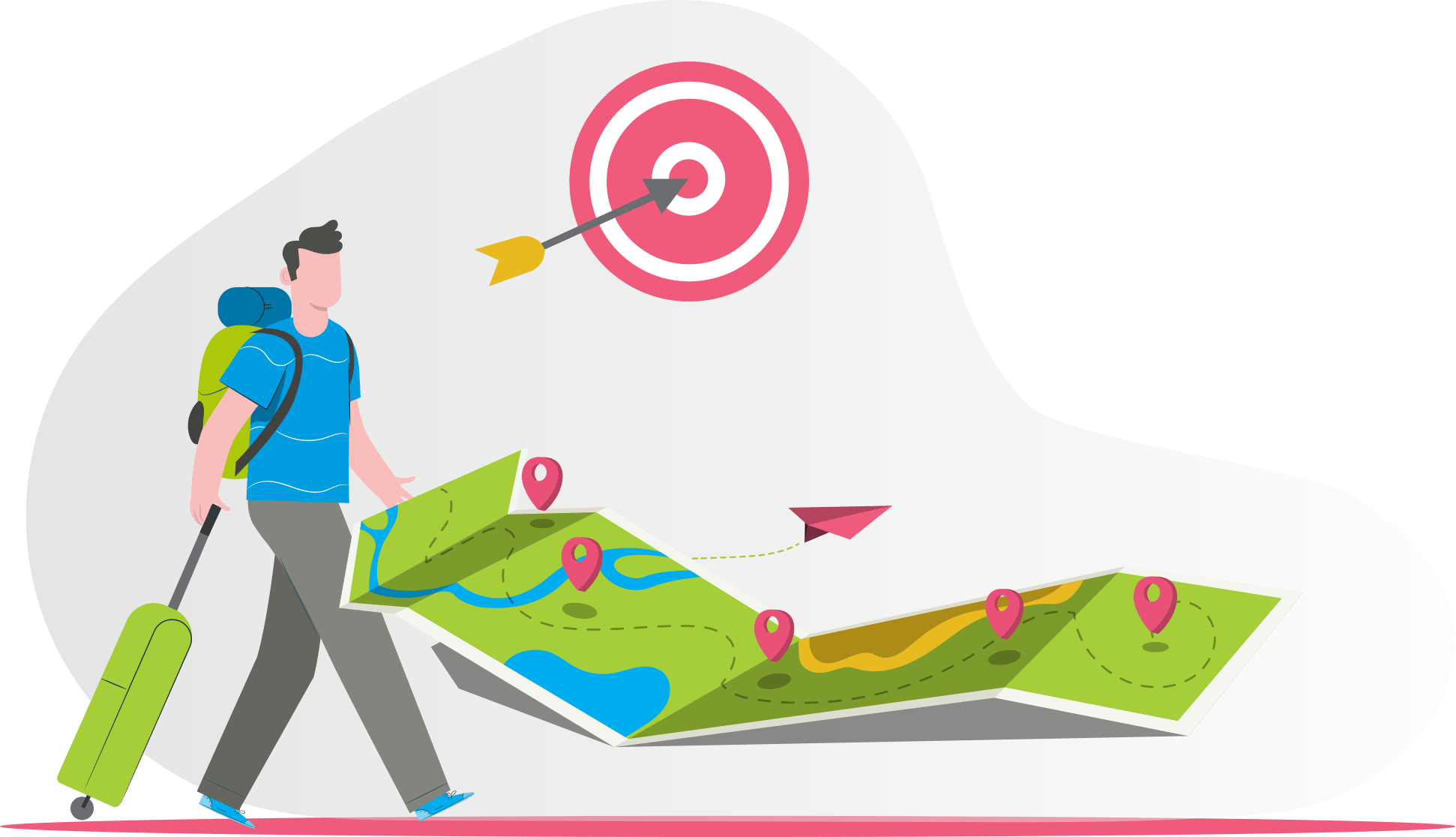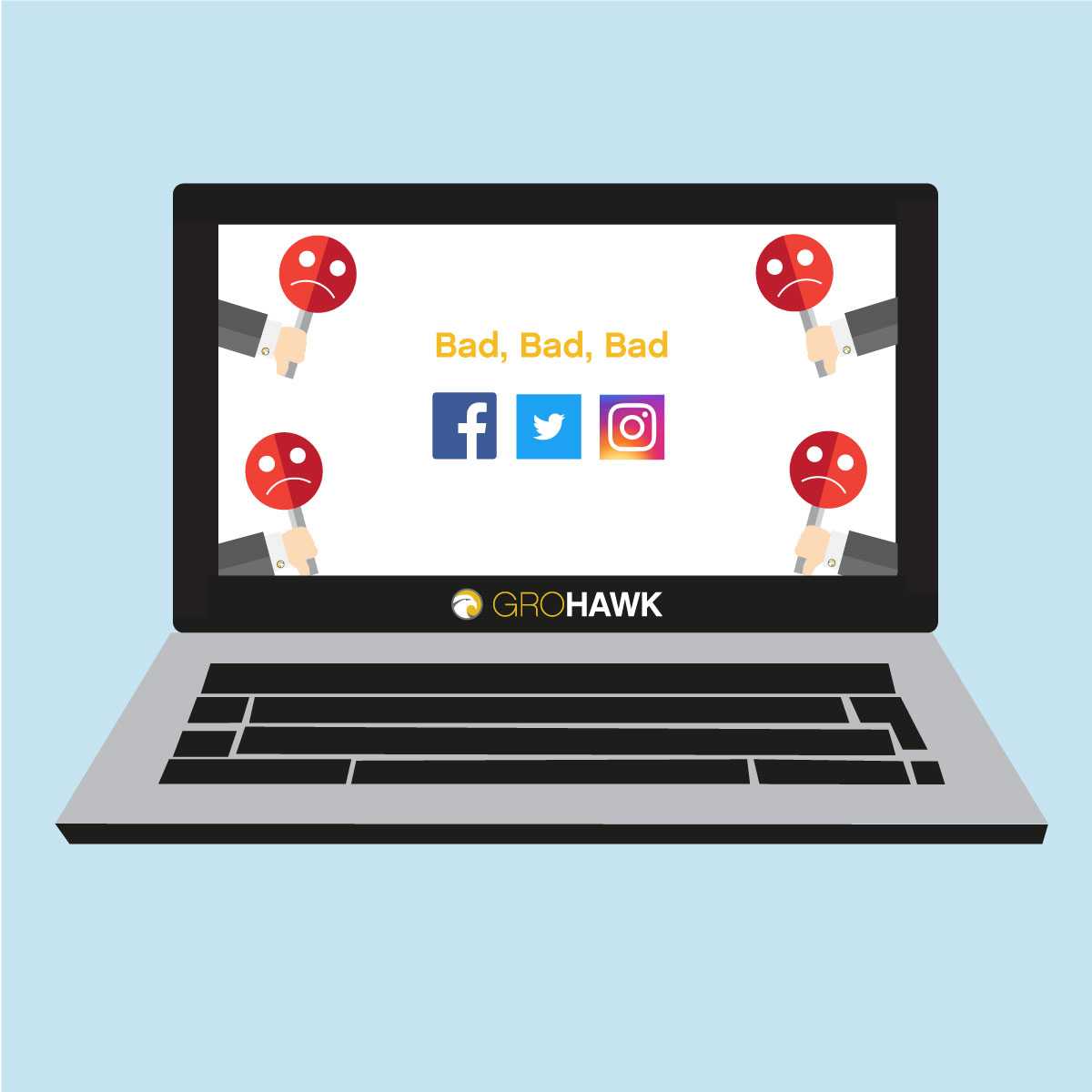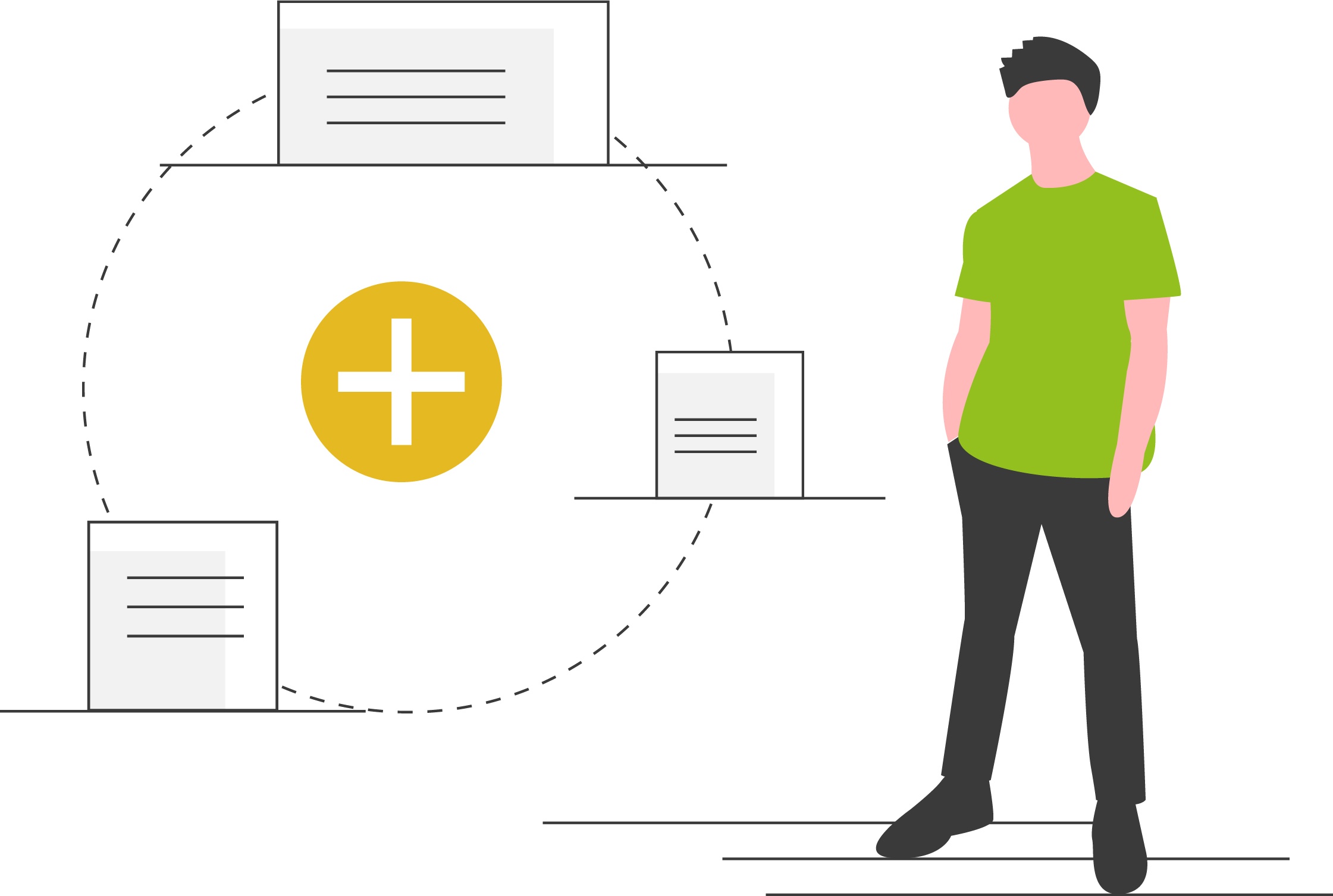22 Jun

Understanding the Customer Journey
So – what is a customer journey, and why do we keep hearing this term so often?
A Customer Journey is an entire process which a buyer goes through to achieve a goal with your company. It is the sum of all interactions that a customer has with your brand at various touch-points. Likewise, A customer journey map is simply a visual representation of the whole process.
The journey begins from the moment customers learn about your existence and decide to research your company. It ends with the final interaction you make with them, either when a purchase is complete or if you carry out any post-purchase interactions or follow-ups. Each interaction is critical since they shape the brand image and perception a client forms of your company.
Without mapping out our customer journey, we will not be able to empathise with the challenges and hurdles our customers are facing when interacting with out brand.
We’ll be talking about the customer journey and the customer journey map. But first, let’s dive a little deep into the broad stages a potential purchaser goes through with your company.
Customer Journey Map Examples Right Here!
Get access to 12 real Customer Journey Maps – for FREE!
Step 1: Awareness
Aside from impulsive or emotional purchases, purchases generally arise from people identifying a problem and then seeking a solution. Here is how the awareness phase works:
Consumer: “I have to walk from home to the bus stop daily. My feet currently hurt with my existing shoes. I need comfy shoes.”
This is what your company should do:
Shoe Company: Provide a solution to the problem. Identify where your customers will search for comfy shoes. Is it social media or web? Since your customer is looking for comfy shoes, make sure you appear where they search/go.
Step 2: Consideration
After identifying a need, they will move on to consider possible options.
Consumer: “What store should I buy from? Should I go for online or in-store shopping? Should I go for Brand A or Brand B? Let’s search the internet for reviews, information, promotions & discounts!”
Company: Make the brand easy to find. Revise your proposition to be compelling and beat the market. Pitch this proposition where your customers are looking for it. Is this online? Is this in your call shopping mall? Is there a common forum where these are discussed for your industry.
Step 3: Decision
After considering the options, consumers will come to the decision phase of which brand to buy from.
Consumer: “Ok, so they have the product I want and the price is sensible. Which brand is more credible or trustworthy? Who’s got the most positive reviews/testimonials? Do I know anybody who has used this brand before?”
Company: Ensure we are providing social proof and authentic testimonials so prospects can feel comfortable doing business with our brand. Are there any certifications or qualifications in our industry which give our clients this peace of mind? If we are B2B, can we share case studies and logos of other brands who have used our services?
Step 4: Retention
Most businesses mistakenly consider their customer journey to be complete after Step 3! Nope! After making a purchase, businesses focus must now turn to retain this customer and getting them to purchase from you again. But, the work of retaining a customer begins at the start of the customer journey!
Depending on the level of service and satisfaction received from your company, customers will be repeat buyers, or they will simply turn their backs on you and seek out a competitor. Providing excellent CX is the single key to retaining customers. Post-visit, it’s critical that businesses continue to engage with consumers to identify any shortcomings or service failures experienced.
Consumer: “I just love my new shoes. The way the salesperson treated me was far better than what I expected. The checkout process was super fast. The only downer was that delivery arrived late.”
Company: Make processes fast and convenient. Gather feedback and see what customers love to provide the same and even better experience to others. Ensure you close-the-loop on feedback received!
Step 5: Advocacy
Once you have started to retain customers and are seeing them return and purchase from you regularly, chances are very high that these loyal customers will refer you to others. As outlined above, consumers heavily rely on family/peer-reviews and consider brands with which their family and friends have had a positive experience with. It is proven that word-of-mouth marketing is more effective versus conventional marketing when it comes down to ROI and cost. Recommendations play a vital role in bringing in new prospects to you and these loyal customers are the most likely to deliver these for you! You’ve already wow’ed them, not its time to go in for the ask.
Company: Gather feedback and use NPS scoring to identify how many customers are willing to recommend you. Those that score you highly are the most likely to recommend you, so go ahead and make the ask!
Consumer: “Hey, Sarah! Looking forward to our meal next week. I got these super comfy shoes from ShoesRUs last week. What an experience! They’ve got an amazing web store and a lot of options to choose from – they even gave me free next day delivery. I totally recommend them to you as I know you’re looking for a new pair. Speak soon”

We have just seen how these five stages form the basis of a customer journey map. Similarly, all businesses have an endless customer-product-service loop that has to be maintained in order to provide outstanding customer experience and in turn, enhance business growth.
Customer journey mapping is a critical exercise which all businesses need to be mapping out on a regular basis. It’s not only important that you map out this journey but it’s important that members of your team travel this journey too. Take the journey and map out challenges or areas of improvement which would make the customer experience that bit more seamless for your customers! It’s amazing what you’ll uncover once you take a step in your customers’ shoes… see what we did there!? 😉
Right, so you’re going to go ahead and create your first customer journey map. Let’s read on for our top 5 tips below:
Customer Journey Maps – The 5 Super Tips
After mapping a whole journey that a customer goes through, companies can begin to think from a customer’s point of view. It gives them answers to questions such as:
“Why do the majority of visitors on my website not turn into buyers?”
“How are my customers finding me?”
“Am I getting more customers through social media marketing or billboard advertisements?”
“In what areas should I improve customer service?”
Your company’s sustained growth relies on the quality of customer experience being delivered.
This is precisely why customer journey mapping is crucial. It shows all those points-of-interaction potential purchasers go through and what impact these touch-points have on their overall experience.
A visual representation makes it easier to analyse the customer journey and create improvement plans accordingly.
The 5 Super Tips
Here are our top 5 super tips to map your customer journey:
Tip # 1: Don’t overlook demographics
While mapping the customer journey, don’t take a general audience. Instead, think about gender/age/geographical/social differences and map this separately. Do males and females follow the same paths? Then consider age groups, income levels and occupations etc. How do these factors affect consumer behaviour and ultimately there customer journey.
Tip # 2: Pay attention to online interactions
When thinking about the various mediums of interaction, the internet should be a priority. The global world is digitised, and companies who take care of their online presence have a definite edge over companies who do neglect this channel.
While creating a customer journey map, see what online platforms/technologies you are using and study how your customer engagement can be enhanced. Develop a website that strongly shows who you are and what you’re best at. Present all the information that a potential client might be interested in knowing and deliver this where they expect it, This could be YouTube, Facebook an industry forum etc.
It’s critical that you offer the technologies that your consumers expect. Do they expect to be able to pay with Apple or Google pay? if so, make sure this functionality is offered – otherwise, you risk alienating your customers.
Tip # 3: Identify and prioritise the main decision-making touch-points
Out of all the steps in a customer journey map, there are these ‘critical’ steps that should be given special attention. These touch-points are the ones where customers spend most of their time interacting with your company. For instance, for a photography company, this touch-point might be their Facebook and Instagram pages, whilst for a furniture company, their in-store showcase maybe what customers deliberate on.
Tip # 4: Map the back-stage journey as well

A back-end, i.e. “workforce journey” is critical to ensuring a successful front-end customer journey is delivered reliably and consistently
Employees who are involved in delivering the customer journey are equally essential to be mentioned in a customer journey map. This will detail the dynamics of the internal systems and processes taking place and resources used at each stage of the journey. Each team member should know what and how they are doing and how this impacts the end CX being received by your consumers.
Tip # 5: Take full advantage of the mapping
Making a map is not the end goal. Taking full advantage of the map is what matters. After mapping, identify what opportunities you have to make improvements. Consider your CJM a reliable tool to help you make customer decisions which level up your CX.
Revisit your customer journey map periodically and make sure that your team members regularly walk through it to identify any hurdles or challenges which still need ironing out.
Why is a customer journey map important?
A CJM is an essential tool for businesses to improve their customer experience. It helps retain customers, bring new referrals, and reduce the churn rate all through ensuring they are delivering memorable experiences throughout a customers interaction with them. It enables the company to grow and generate positive revenues.
Why should we map the customer journey?
The goal is to enhance the user experience by increasing efficiency, efficacy and removing fall-outs. CJM helps you identify weak points in your buyer process allowing you to devise better improvement strategies and action plans.
How to create a customer journey map?
The first step is to understand your buyer interests and behaviours. Then find out the main customer touch-points and walk the journey yourself to identify opportunities for improvement. Be sure to include every single interaction a customer could possibly have with your brand!
How can a customer journey be improved?
Your customer journey can be significantly improved by reducing customer effort, increasing efficiency in processes, removing pain points and making customer interactions seamless and enjoyable. Reduce the friction between your buyers and the products or services you offer.
What are the touch-points in customer journey mapping?
Touch-points are the stages in which a customer interacts with the organisation. These touch-points are through various channels and mediums. From online, SMS, letters to in-store interactions and telephone calls.
What is a back-stage customer journey?
A complete CJM consists of front and back-stage journeys. While front-end shows the stages of customer interaction, back-stage shows the workforce and resources that are involved in each particular experience. The employee experience works in hand to ensure customers are receiving the necessary experiences on the front-end.








